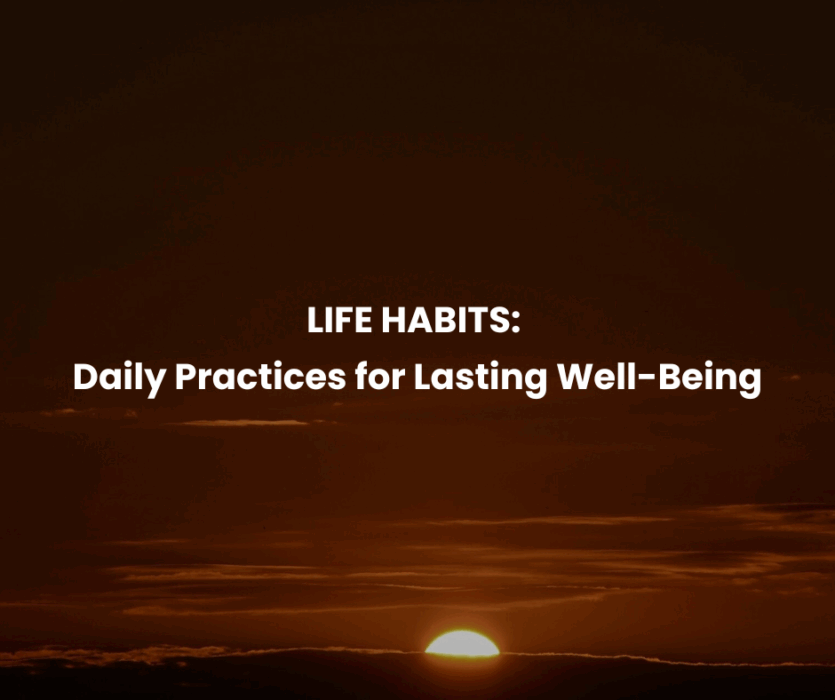
Habit #13: Regulate Your Ego. Challenge Your Urge to Prioritize Appearance Over Substance
Benefit: Your ego’s core mission? To feel important and accepted within the group.
However, this drive often triggers an ongoing internal struggle, compelling you to defend your sense of self relentlessly. This means that when you’re faced with rejection or discomfort, it will test your ego and can take a toll on your self-worth.
Now, having an ego isn’t inherently bad – it’s crucial for maintaining self-esteem, and it’s perfectly natural to desire a sense of importance. But it’s important you keep your ego in check. Doing so will dial down anxiety, and help you reclaim control of your emotional well-being.
Overview: Alright, let’s break it down. Your brain, wired for survival, often defaults to irrational, short-term thinking. But fear not! Your conscious mind has the power to override these primal urges. Now, with that in mind, let’s talk about your ego.
Ego, simply put, is your self-importance and self-esteem. A healthy ego boosts your confidence, empowering you to tackle challenges head-on. But beware of the pitfalls of an inflated ego – this can lead to arrogance, boasting, and entitlement. Plus when challenged, it can crush your self-esteem.
Your ego is a complex interplay of emotions, modulated by brain circuits that govern self-doubt and confidence. And while scientists are still unraveling the mysteries of these circuits, one thing’s for sure: indulging your ego too much can whisk you away from the present moment, and leave you lost in self-importance or self-doubt.
Instead, strive for meaningful connections and experiences, resisting the temptation to seek constant validation and admiration. After all, true fulfillment lies not in the spotlight, but in the richness of life’s genuine moments
Liife Habit Guide
Regulate Your Ego. Challenge Your Urge to Prioritize Appearance Over Substance
- Tune into Your Ego’s Signals: The first step in mastering the art of ego regulation is recognizing when your ego takes the wheel. Ask yourself:
- Have I ever felt envious of someone else’s success?
- Do I often compare myself to others?
- Have I sought attention or validation?
- Do I tend to see myself as superior to others?
- Do I enjoy gossiping about others’ flaws?
- Have I ever found myself boasting about my moral values?
- Do I look down on others for not putting in as much effort as I do?
These are all red flags that your ego is calling the shots. Identifying these tendencies is the crucial first step toward reining in your ego.
- Rewire Your Ego’s Narrative: Challenge those negative or ego-driven thoughts by flipping the script. Instead of blindly accepting them, interrogate their validity. Techniques like cognitive restructuring, popular in therapies like CBT, can help you swap distorted beliefs for more rational ones. For example, if you catch yourself feeling superior to others, reframe that notion by recognizing their successes and strengths. Acknowledge the role of luck and circumstance in your achievements.
- Resist the Social Media Ego Trap: Constantly seeking validation on social media only feeds your ego’s insatiable hunger for external approval. This pursuit can spiral into a never-ending cycle of seeking more validation, leaving you feeling insecure and inadequate when expectations aren’t met. Social comparison theory underscores how comparing ourselves to others, particularly on curated social media feeds, breeds envy and diminishes our self-worth. Break free from this cycle by resisting the urge to indulge your ego on social media platforms.
- Cultivate Gratitude and Humility: Start your day by expressing gratitude for the blessings in your life, and take a moment to acknowledge three achievements you’re proud of. Then, practice humility by recognizing the contributions of others to your success. Humility complements gratitude by fostering openness, modesty, and self-awareness. Studies show that humble individuals tend to have stronger, more meaningful relationships, as they’re more receptive to others’ perspectives and more willing to collaborate.
-
Shift the Spotlight: In conversations, make a conscious effort to focus on the other person. By actively listening to their thoughts and feelings, you redirect attention away from your ego’s self-centered concerns. Research suggests that practicing perspective-taking promotes empathy and reduces egocentric biases, leading to more authentic and fulfilling interactions. So, step into their shoes, tune into their emotions, and watch your ego take a backseat as genuine connection takes center stage.
Habit #14: Retrain Your Mind to Adopt More Positive Habitual Thinking Patterns
Benefit: By fostering the habit of positive thinking, you’ll pave the way for a healthier life. This practice reduces cortisol (the stress hormone), leading to improved cardiovascular health and immune function, while also building the resilience you need to navigate life’s challenges.
Positive thinking also serves as a driving force behind stronger interpersonal connections. As you train your mind to embrace positivity, you’ll notice a transformation in your communication skills, leading to more effective interactions and a deepened sense of empathy.
Overview: Ever heard of neuroplasticity? It’s a fascinating concept describing the brain’s remarkable ability to adapt and change throughout life. The brain is constantly forming new connections, pruning away unused ones, and strengthening the ones it uses often.
Now, here’s where it gets interesting: when we get stuck in negative thinking patterns – like constant self-criticism or pessimism – our brain goes through some changes. Those repetitive negative thoughts? They reinforce specific neural pathways, making it easier to keep thinking negatively. But guess what? You have the power to change that!
By challenging those negative thoughts and actively working to think more positively, you can retrain your brain and create new, healthier thinking habits. It’s all about flexing that mental muscle and embracing a brighter mindset.
Liife Habit Guide
Retrain Your Mind to Adopt More Positive Habitual Thinking Patterns
- Understand Your Mind’s Disposition to Negativity: Research suggests that the average person has around 60,000 thoughts daily, with a staggering 75% being negative and 95% repetitive. Hence, the human mind has a natural inclination toward negativity. This tendency is rooted in an evolutionary adaptation known as the negativity bias. This causes us to pay attention to and prioritize negative stimuli for survival. Left unchecked, these negative thinking patterns can leave you feeling not so great. But, guess what? It’s in your power to change this thinking style and adopt more positive thinking habits.
- Know the Connection Between Thoughts, Feelings, and Behavior: Understanding the connection between thoughts, feelings, and behavior is fundamental to cognitive-behavioral therapy (CBT). CBT asserts that our interpretations of situations directly influence how we feel and act. For instance, if you consistently hold negative beliefs about your abilities, you may experience anxiety and avoid challenges, perpetuating a cycle of negativity. CBT intervenes by helping you recognize and challenge these negative thought patterns. Techniques like cognitive restructuring enable you to replace harmful thoughts with more balanced ones, leading to improved emotional well-being and functioning.
- Identify Common Negative Thought Traps: CBT identifies several common negative thinking patterns as listed below:
- All-or-nothing Thinking (Black-and-White Thinking): Viewing situations in extreme terms, such as success or failure, with no middle ground.
- Overgeneralization: Drawing broad conclusions based on limited evidence or a single incident.
- Mental Filtering: Focusing exclusively on negative aspects of a situation while ignoring any positive elements.
- Discounting the Positive: Rejecting positive experiences or accomplishments by insisting they “don’t count.”
- Jumping to Conclusions: Making negative interpretations without evidence. Examples include mind-reading – assuming others’ thoughts – or fortune-telling – predicting negative outcomes.
- Magnification and Minimization: Exaggerating the importance of negative events or qualities while downplaying positive ones.
- Emotional Reasoning: Believing that feelings reflect reality, regardless of evidence to the contrary (e.g., “I feel stupid, so I must be stupid”).
- Should Statements: Using “should,” “ought to,” or “must” statements that impose unrealistic expectations on oneself or others, leading to feelings of guilt or frustration.
- Labeling and Mislabeling: Generalizing based on behavior or mistakes, using overly harsh labels instead of recognizing the complex nature of situations or individuals.
- Personalization: Assuming undue responsibility for negative events or outcomes, even when not directly responsible.
- Set Aside Time to Challenge Your Thoughts: Throughout your day, make a note of all the negative thoughts that arise. You can do this simply on your phone. Then, set aside 20 minutes to challenge your thoughts. During this time, actively question the accuracy and validity of each negative thought you had in the day. Seek evidence to support or refute each thought and consider alternative perspectives. Work with a loved one or a therapist for support. This practice allows for the identification of cognitive distortions and encourages the development of more balanced and realistic beliefs. By regularly engaging in this process, you can weaken the influence of negative thinking patterns and foster a more positive and resilient mindset.
- Know That Life Isn’t Always That Bad: Know that life is never as bad as your brain can trick you into believing. By actively seeking out and focusing on the positive aspects of life, you can cultivate a more balanced perspective, which can help counteract the tendency towards pessimism. This practice encourages mindfulness and gratitude, prompting you to appreciate the small pleasures and victories that enrich your life, even
